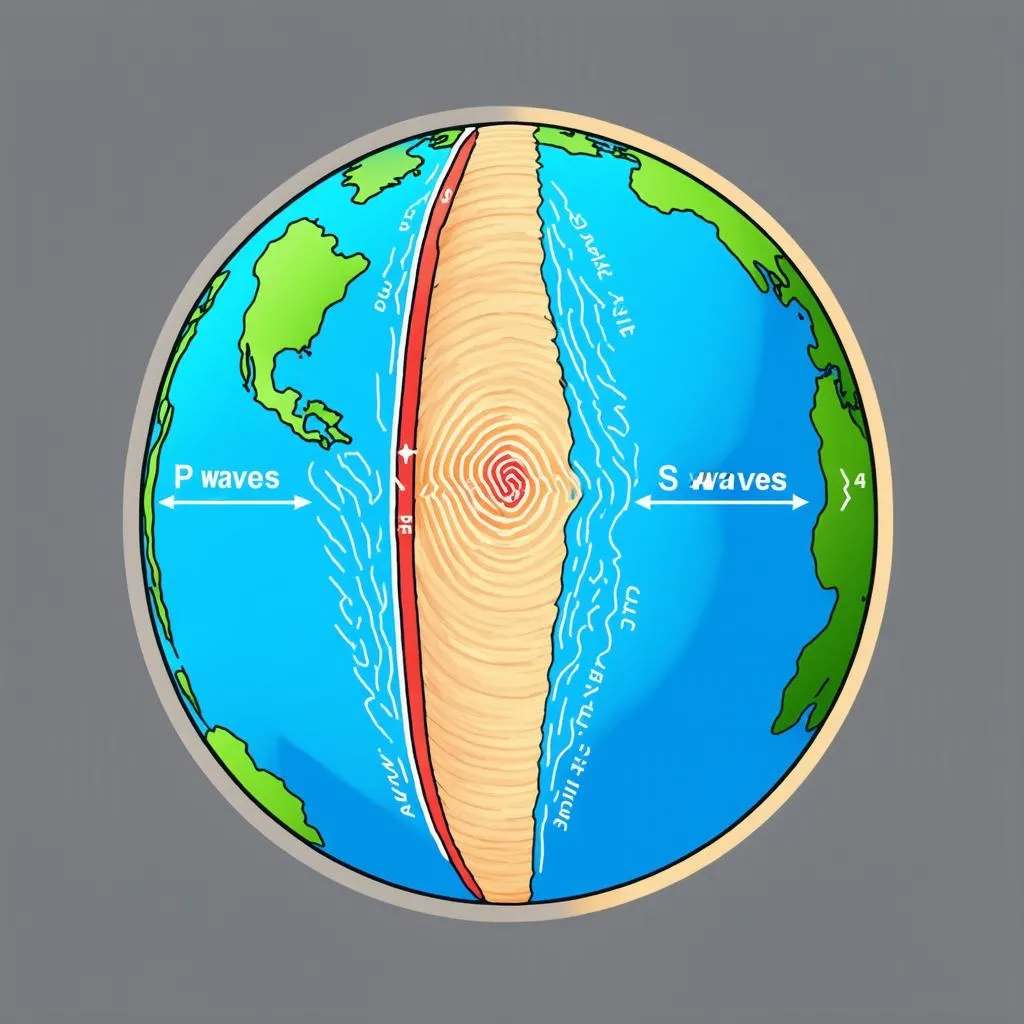Have you ever wondered how geologists pinpoint the exact location of an earthquake’s epicenter? Or how we understand the Earth’s interior structure without ever digging to its core? The answer lies in analyzing travel-time curves, a fascinating visual tool used in seismology. This article will guide you through understanding these curves and their significance in unraveling the mysteries beneath our feet.
What Does a Travel-Time Curve Show Graphically?
Imagine tossing a pebble into a still pond. You see ripples, or waves, spreading outward from the point of impact. Earthquakes similarly release energy in the form of seismic waves that travel through the Earth. A travel-time curve graphically represents the time it takes for these waves to travel from the earthquake’s focus to various seismic stations around the world.
 Travel-Time Curve Illustration
Travel-Time Curve Illustration
Key takeaways:
- X-axis: Represents the epicentral distance, the distance between the earthquake’s epicenter (the point on Earth’s surface directly above the focus) and the seismic station.
- Y-axis: Represents the travel time of the seismic waves.
- Curves: Different types of seismic waves, like P-waves and S-waves, are represented by distinct curves.
- P-waves (Primary waves): These are the fastest seismic waves and arrive at the station first.
- S-waves (Secondary waves): These waves arrive later than P-waves.
Decoding the Curves: How Travel-Time Data Unveils Earth’s Secrets
By analyzing the curvature and spacing between the P-wave and S-wave curves, seismologists can deduce crucial information:
Locating the Epicenter: The difference in arrival times between P-waves and S-waves at a single seismic station helps determine the distance to the earthquake’s epicenter. By combining data from multiple stations, seismologists can triangulate the epicenter’s precise location. Imagine drawing circles around each station, with the radius representing the distance to the epicenter. The point where all the circles intersect marks the epicenter.
Unveiling Earth’s Internal Structure: The varying speeds of seismic waves as they pass through different layers of Earth’s interior cause the curves on the travel-time graph to bend. These bends provide insights into the composition, density, and state (solid or liquid) of the Earth’s layers. For instance, the fact that S-waves cannot travel through liquids helped scientists conclude that the Earth’s outer core is molten.
A Real-World Example: The San Andreas Fault
Imagine you’re a seismologist monitoring seismic activity along the San Andreas Fault in California. A sudden tremor shakes the ground! Data from numerous stations along the West Coast pour in, showing the arrival times of P-waves and S-waves. By plotting this data on a travel-time curve, you can quickly pinpoint the earthquake’s epicenter and estimate its magnitude. This information is vital for issuing timely warnings and coordinating disaster relief efforts.
FAQs about Travel-Time Curves
Q: Why do P-waves travel faster than S-waves?
A: P-waves are compressional waves, meaning they travel by compressing and expanding the material they pass through, similar to sound waves in air. S-waves, on the other hand, are shear waves, which move by displacing the material perpendicular to their direction of travel. This difference in wave motion allows P-waves to travel faster through all types of mediums – solids, liquids, and gases – while S-waves can only travel through solids.
Q: How accurate are travel-time curves in determining earthquake locations?
A: With a dense network of seismic stations and sophisticated data analysis techniques, seismologists can pinpoint earthquake epicenters with remarkable accuracy, often within a few kilometers.
 Seismic Waves Traveling Through Earth
Seismic Waves Traveling Through Earth
Travel-Time Curves and the Bigger Picture
Understanding travel-time curves is fundamental to seismology, providing crucial information for:
- Earthquake monitoring and early warning systems
- Mapping Earth’s internal structure
- Exploring for natural resources, such as oil and gas
- Monitoring volcanic activity
Beyond their scientific applications, these curves offer a fascinating glimpse into the powerful forces that shape our planet. By studying the subtle whispers of seismic waves, we gain a deeper understanding of the Earth’s hidden depths and the dynamic processes that govern its behavior.
For more insightful information about Earth’s wonders and travel destinations around the globe, visit travelcar.edu.vn.
